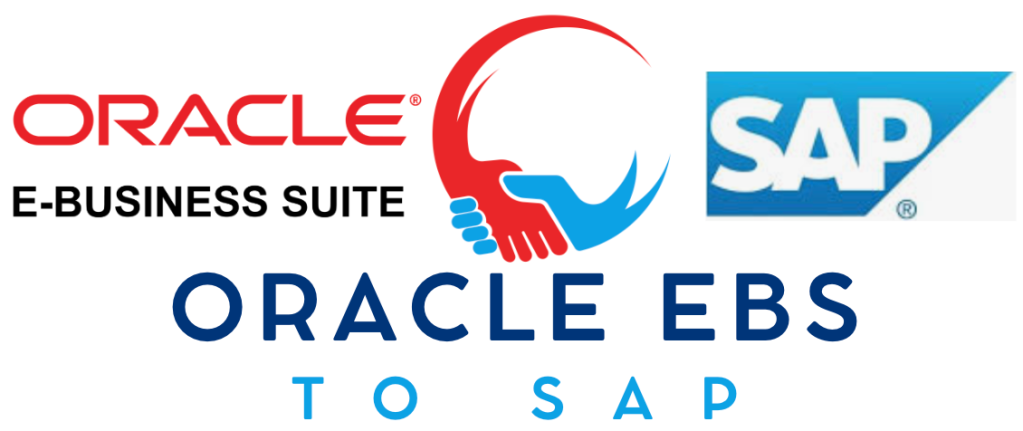
Migrating from Oracle E-Business Suite (EBS) to SAP is a strategic decision that requires meticulous planning and execution. An enterprise architect would understand the complexities involved—from technical considerations to stakeholder management. In this article, I aim to talk you through the thought process of determining essential steps and considerations for a successful migration.
Step 1: Assessing Your Current State
Before diving into migration planning, it’s crucial to thoroughly assess your current Oracle EBS environment.
Inventory Systems and Modules
- Document all systems and modules currently in use within Oracle EBS.
What systems and modules are currently part of your Oracle EBS setup?Mapping Business Processes
- Understand and document existing business processes and workflows.
How are your business processes currently structured in Oracle EBS?Identifying Customizations
- Identify any customizations, extensions, integrations, and third-party applications.
What customizations or integrations do you have in Oracle EBS that need to be considered?Step 2: Defining Your Requirements
Once you have a clear understanding of your current state, the next step is to define your requirements for the new SAP environment.
Gathering Business Requirements
- Engage with stakeholders to gather business requirements and objectives.
What are the key business objectives driving your migration to SAP?Functional and Technical Requirements
- Define both functional requirements (e.g., modules needed) and technical requirements (e.g., performance, security).
What are your key functional and technical requirements for the SAP system?Step 3: Conducting a Gap Analysis
Perform a comprehensive gap analysis to identify differences between Oracle EBS and SAP capabilities.
Fit-Gap Analysis
- Compare functionalities of Oracle EBS with SAP offerings to identify gaps.
What are the critical gaps between Oracle EBS functionalities and SAP capabilities?Step 4: Planning Your Data Migration Strategy
Develop a robust strategy for migrating your data from Oracle EBS to SAP.
Data Mapping and Transformation
- Map data fields from Oracle EBS to SAP and define transformation rules.
How will you map and transform data during the migration process?Ensuring Data Quality
- Cleanse and validate data to ensure accuracy and completeness.
What steps will you take to ensure data quality before and after migration?Step 5: Designing Your SAP System Architecture
Outline the architecture and design of your new SAP environment.
Infrastructure Considerations
- Decide on deployment (cloud vs. on-premise) and define hardware requirements.
What are your considerations for SAP deployment and infrastructure?System Design and Integration
- Plan SAP modules and integration points with other systems (e.g., CRM).
How will you design the SAP system architecture to align with your business needs?Step 6: Implementing and Executing Your Migration Plan
Develop a detailed implementation plan and prepare for execution.
Project Management
- Develop a project plan, allocate resources, and manage timelines and milestones.
How will you manage resources and timelines throughout the migration project?Change Management and User Adoption
- Communicate changes effectively, provide training, and ensure smooth adoption.
What strategies will you implement to manage change and encourage user adoption?Testing and Validation
- Conduct thorough testing (unit, integration, and user acceptance testing) to validate the new SAP environment.
How will you ensure the SAP system is thoroughly tested and validated before go-live?Step 7: Going Live and Beyond
Prepare for the final migration steps and ongoing support.
Final Data Migration and Go-Live
- Execute the final data migration, implement backup strategies, and go live with the new SAP environment.
What are your plans for the final data migration and go-live process?Post-Implementation Support
- Provide post-go-live support, monitor system performance, and address any issues.
How will you ensure smooth operation and support after the migration to SAP?Conclusion
Migrating from Oracle EBS to SAP is a complex but rewarding journey for any organization. By following these structured steps and considering the interactive prompts provided, you can navigate through challenges more effectively and achieve a successful migration. Remember, thorough planning, stakeholder engagement, and attention to detail are key to a smooth transition to your new SAP environment.
Are you ready to embark on your migration journey from Oracle EBS to SAP? Feel free to ask any specific questions or share your thoughts on the process!
And Yes, I LOVE CODING... :-)